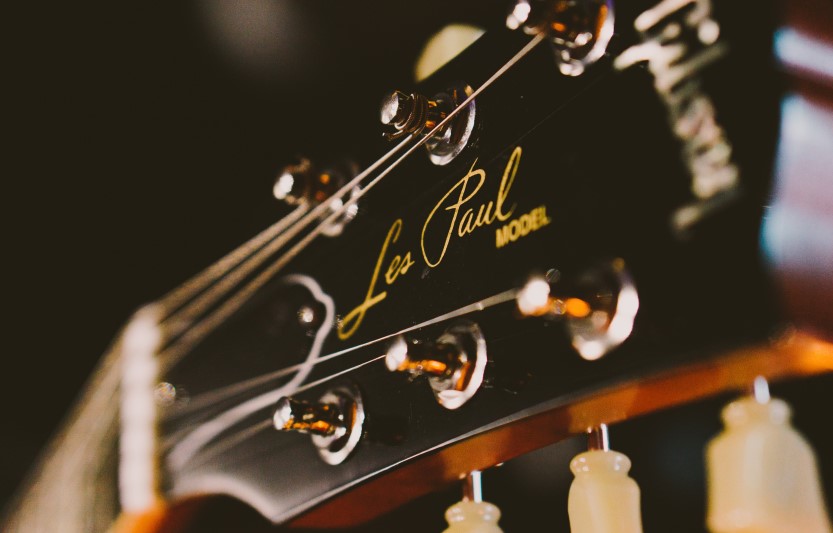
These 5 popular alternate tunings for guitar can open a universe of possibilities. By using them, you are essentially changing the nature of the instrument but without having to buy a new guitar.
You will have access to new patterns and unique ways to play by altering the pitch of some or all the strings. If you feel stuck in a rut, this will help you explore new ways to play. As a result, alternate tunings will take you out of your comfort zone and force you to figure out new ways to play and make music. Keep in mind that there are many more alternate tunings, so the sky’s the limit here.
Naturally, you will probably find that some alternate tunings are more suitable to your style and preference than others. However, the only way to know which tunings you like best is by trying them out. For this, you’re going to need a reliable tuner, not only to tune to the altered tunings but also to return to standard tuning. Without further ado, here are 5 popular alternate tunings for guitar.
Drop D
Typically associated with heavier genres like metal, Drop D tuning is very useful overall. On top of that, it might be the easiest tuning to use in a live concert (unless you have several guitars, each tuned differently. All you have to do is take the low E string and drop it to D.
This gives the guitar an extended range by allowing it to reach one whole step lower. This tuning has a very unique quality: from the 5th string up, the guitar remains the same as always. However, by just changing the 6th string, you will need to modify all the bass notes as well as scale and patterns that start on the low E string.
You will also be able to create chords with different bass notes that were unavailable in standard tuning. In other words, Drop D tuning is a great place to start experimenting with alternate tunings.
DADGAD (Open D)
This tuning is also favored in darker genres like metal. It features three lowered strings, all of them by one step. You might think of this like a natural progression from drop D tuning. Heavier genres like to rely on guitars that are tuned lower, but you can also find DADGAD tuning on celtis music and even classic rock. For instance, guitar legend Jimmy Page used DADGAD
On the Led Zeppelin anthem “Kashmir”. Naturally, you won’t be able to play any of the scales or chord shapes that you know. That might seem like a disadvantage, especially if you have spent a lot of time practicing. However, keep in mind that alternate tunings are used precisely to get off the beaten path and try something new.
DGDGBD (Open G)
This tuning uses the notes of a G major triad. In other words, it is built with the same exact notes used on a G chord. Therefore, DGDGBD tuning is often referred to as open G tuning. Blues and rock players favor this tuning as it opens up a lot of possibilities yet uses the popular key of G as its basis.
You achieve this tuning by dropping the sixth string to D, the fifth to G and the 1st string to D. The other two strings (4th and 2nd) keep their same pitches as in standard tuning (D and B, respectively). As expected, this tuning requires different chord shapes, scales and patterns than standard tuning. And that is a good thing if you want a new sound!
Blues icon Robert Jonson employed DGDGBD tuning on his song “Walking Blues”.
DADF#AD (Open D)
This tuning has the particularity of consisting of the notes of a D chord. That means that if you strum all open string on DADF#AD you get a D major chord. This tuning only uses the notes from a D major triad, with the fifth being doubled (A) and the root tripled (D).
DADF#AD is a popular tuning among slide guitarists and also those that favor fingerpicking. Naturally, none of the chord shapes that you learned in standard tuning will work here, neither will the patterns or scales. DADF#AD is its own universe, and that is great news if you’re looking for something new, especially for songwriting or riff writing. The song “Kamera” from Wilco uses DADF#AD tuning.
EBEG#BE (Open E)
In this alternate tuning, some strings are tuned up instead of down. The fifth string goes up a whole step (from A to B), the fourth string also a whole step up (from D to E) and the third-string goes up a half step (from G to G#).
This puts a significant extra amount of pressure in the neck, as you are increasing tension on three strings. This tuning is also more prone to lead to broken strings. In return, you get a tighter sound that works quite well in blues and rock. Guitarist Derek Trucks uses Open E tuning almost exclusively, whether he’s playing with a slide or not. The song “She Talks To Angels” by The Black Crowes uses open E tuning.
These 5 popular alternate tunings for guitar will give you a plethora of options to spice up your guitar playing and songwriting. They will make you search for new ways to play and get around the instrument. This is because basically none of the chords, scales, and patterns that work on standard tuning will work.
Naturally, like most things music-related, it will take practice and dedication to get comfortable with alternate tunings. You can start step by step, and work on one alternate tuning at a time. Figure out how it works, what sounds and chords feel like, and spend some time with it before moving on to the next one. If you are tired of playing the same scales and patterns over and over, then alternate tunings are definitely a great way to add excitement to your journey.


